CLOWN IN A CORNFIELD (2025)
A fading midwestern town in which Frendo the clown, a symbol of bygone success, reemerges as a terrifying scourge.

A fading midwestern town in which Frendo the clown, a symbol of bygone success, reemerges as a terrifying scourge.


After directing and writing Tucker and Dale vs. Evil (2010) and Little Evil (2017), Eli Craig solidified his reputation as a severely underrated horror-comedy director. His first film remains his best by a long shot, a buddy comedy featuring two best friends, the eponymous Tucker (Alan Tudyk) and Dale (Tyler Labine), a bickering odd couple who understand each other more than they do themselves. The endearing qualities of this platonic love are matched by the romance that slowly blossoms between Dale and Allison (Katrina Bowden), one of the college kids that finds these two harmless hillbillies terrifying, where a series of misunderstandings makes the pair look like sadistic monsters. With two earnest, comforting relationship dynamics at the heart of the film, it proved an emotionally absorbing story with unexpectedly clever subversions of horror tropes regarding backwards country folk.
The film is also so tightly arranged that you get a sense of the entire story and its principal characters from the first five minutes, while the chemistry between Tucker, Dale, and Allison is a joy to behold. These qualities are much fainter in Craig’s follow-up movie, Little Evil, a middling comedy with glimpses of greatness, usually found in leading man Adam Scott’s dialogue and line delivery as a slightly helpless and generic stepdad to a Satanic young boy. It’s also worth noting that one of the best aspects of the film, fast-paced montages of pretty generic activities, had already been perfected by Edgar Wright throughout his Cornetto trilogy. For his latest film, Clown in a Cornfield, Craig is again indebted to the British director, this time through plot similarities between this film and Hot Fuzz (2007)—all of which are too spoiler-riddled to mention.
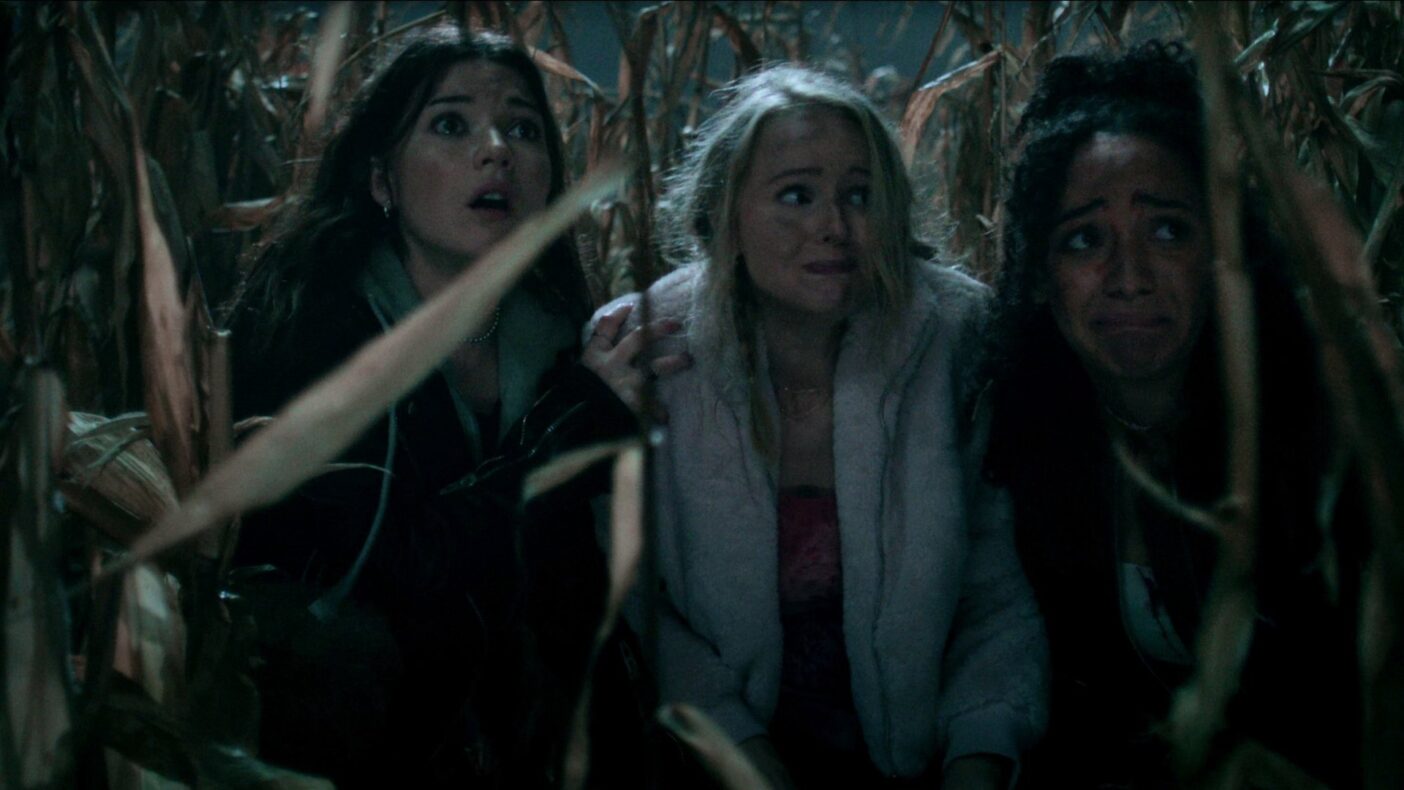
Not dissimilarly to Craig’s first two films, Clown in a Cornfield dispels easy over-simplifications, shifting away from genre tropes and abject othering in horror movies to the much more realistic battleground of hostility between generations. Both the teens and adults in this film have a serious bone to pick with one another, where growing frustration and an inability to connect result in an endlessly renewing cycle of hatred. Teenager Quinn Maybrook (Katie Douglas) and her dad Glenn (Aaron Abrams) are dropped into this madness from the get-go. Two newcomers to Kettle Springs, Missouri, the father and daughter duo are struggling to adjust to their new life; not just the move itself, but also the passing of Quinn’s mother. It’s a standard setup that justifies itself for logistical reasons, lacking anything in the way of an emotional thrust; it’s also near-identical to the relationship dynamic between the father and daughter protagonists of this year’s similarly forgettable Death of a Unicorn (2025).
Quinn quickly befriends a group of prankster teenagers, whose antics have left them despised by the townsfolk after its Corn Syrup factory, Baypen, burned down, a result of a faulty wire that is nonetheless blamed on the teens for their reckless behaviour. Craig, who co-wrote the film with Carter Blanchard, writes himself into a dead-end in the way of emotional investment with these teens. He wants to have it both ways, where we are left in constant doubt throughout Clown in a Cornfield’s first act regarding their intentions. Are they really just a standard group of fun-loving pranksters, or malevolent sociopaths, as the awkward hillbilly teen Rust (Vincent Muller) seems to imply to Quinn? And is one of the group’s members masquerading as a killer clown rendition of Frendo, Baypen’s mascot, who is hellbent on massacring townspeople?
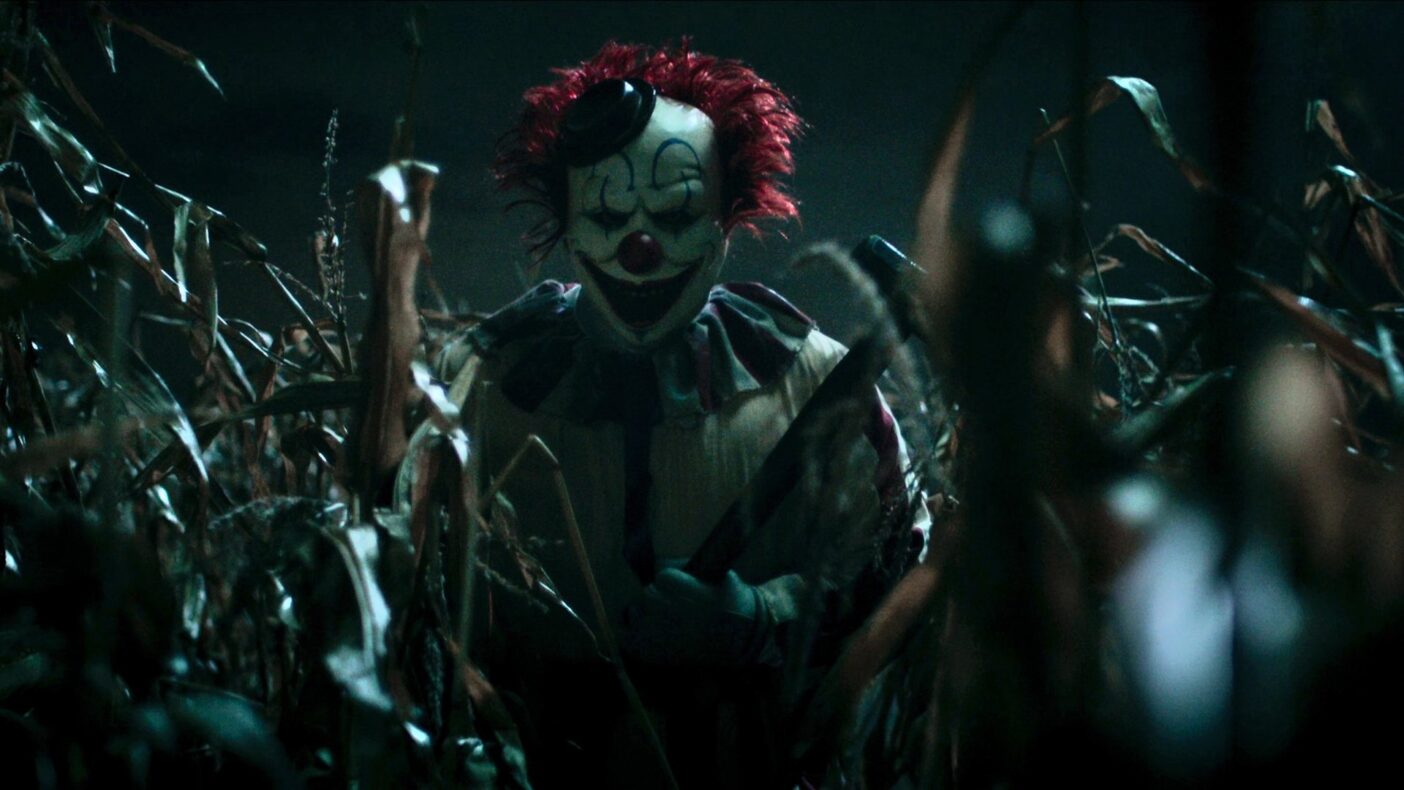
Here’s the problem: the teens are never threatening or sinister, and like a lot of teens in films, come across as a bunch of theatre kids rather than real people. The only thing left to discern about them is whether they are harmless or evil theatre kids. They are kept at just enough of an emotional distance to make it impossible to care about any of them, while Douglas’ lead performance as Quinn doesn’t leave much room for resonance. It’s difficult to tell whether her mumbled line delivery and aloof attitude is entirely a performance from this character, or merely a reflection of Douglas’ limitations. As for the rest of these performers, none of them are able to embody the truly irritating aspects of adolescence, whether that’s in how adults view teens, or how these young adults view themselves. Self-loathing and obnoxious cattiness are present, but never illuminating—or even heartfelt—in their delivery.
Of the teen characters, Cole (Carson MacCormac) is given enough screentime to differentiate himself from the rest of the one-note members of this friend group, while Janet (Cassandra Potenza) slowly comes into her own when she acts in a catty and jealous way towards Quinn. But Cole’s internal turmoil and confusion over his identity is too underbaked to care about, while Janet’s behaviour, though irritating, isn’t able to provoke the hatred that Craig is clearly trying to inspire in viewers. Besides, like most of these teens, she’s really just a floating, ethereal being, capable of just about anything seeing as how she’s hardly been developed. Despite a number of scenes between Quinn and this group to establish their rapport and tension, the vast majority of these core characters aren’t fleshed out in the slightest. Rust is the only person in the entire town that feels like he’s being purposefully kept in the wings for his big moment, and while there’s a semi-interesting twist involving his character down the line, it never feels as if he accesses that narrative potential in Clown in a Cornfield.
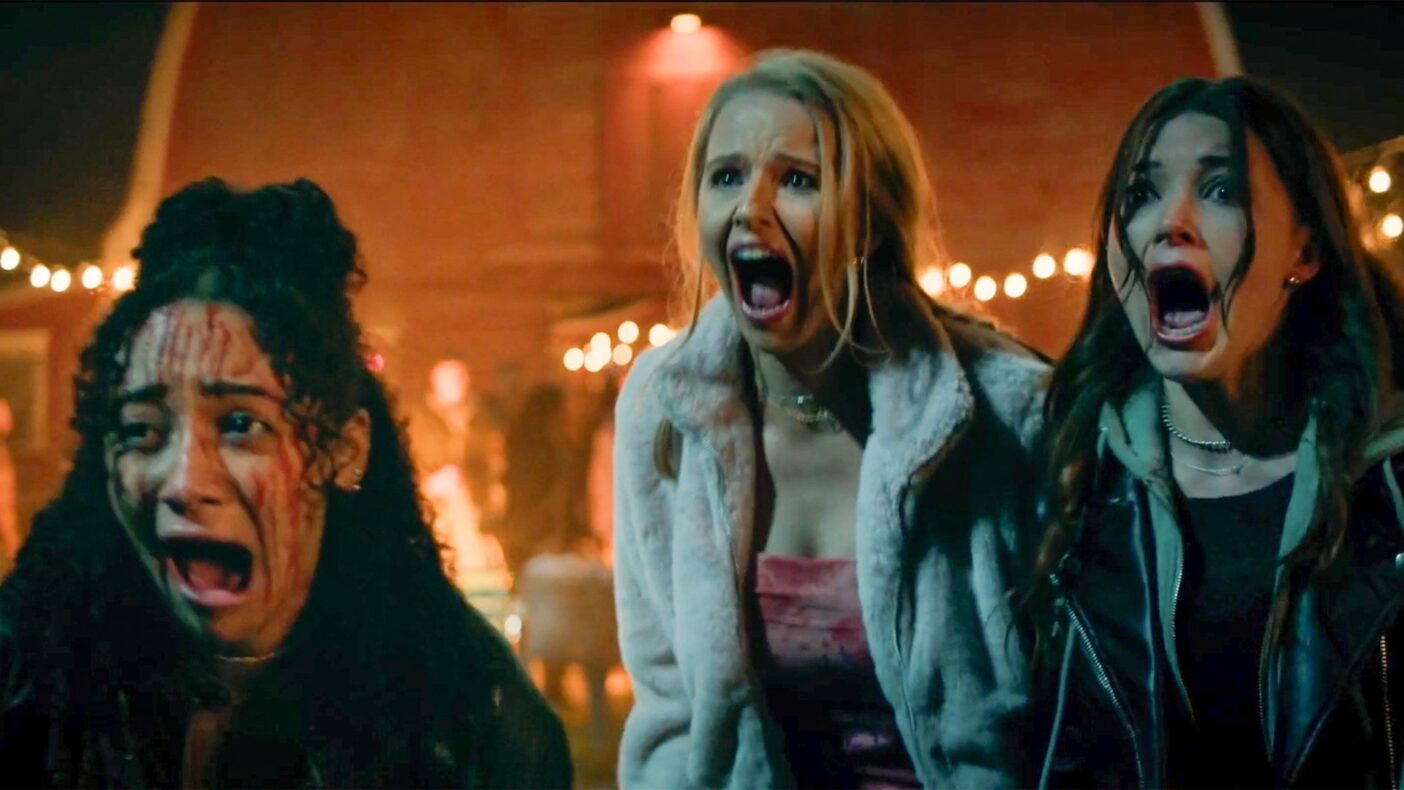
The vapid college kids that were so brilliantly satirised in Tucker and Dale vs. Evil have been replaced by similarly vapid teens. But with no over-the-top or realistic behaviour in place, there’s nothing to parody or connect with. It’s a form of shallow writing that offers little to no comedic outlet for the viewer. In Tucker and Dale vs. Evil, I felt tremendous pity for Dale whenever he got his feelings hurt. I couldn’t give a damn about whether any of the characters in Craig’s latest film lived or died. There are a few disarming lines so funny (and so unexpected) that I laughed out loud, but a movie can’t be held up by five or six humorous interactions lasting about 10 seconds apiece, even when it sports a trim 96-minute runtime. The jokes don’t often land, but what’s more striking is how little of an attempt was made in the way of comedy.
When the film commits to a purely horror-filled scene in its first half hour, so little of comedic note had occurred that it seemed only right to expect that this would be a more serious outing from Craig. His previous films had flirted with the horror genre or parodied some of its tropes, but had only half-heartedly committed to scaring viewers. Unfortunately, this approach is abandoned in favour of a comedy that rarely attempts to joke around, with some insufferable late-stage villains housed in sequences that are a chore to sit through. All of Clown in a Cornfield’s big, lofty notions about intergenerational divides, the decline of manufacturing in US towns, and technology’s disruption of important communication are admirable, but there’s too much happening and little to cohere this jumble of ideas.
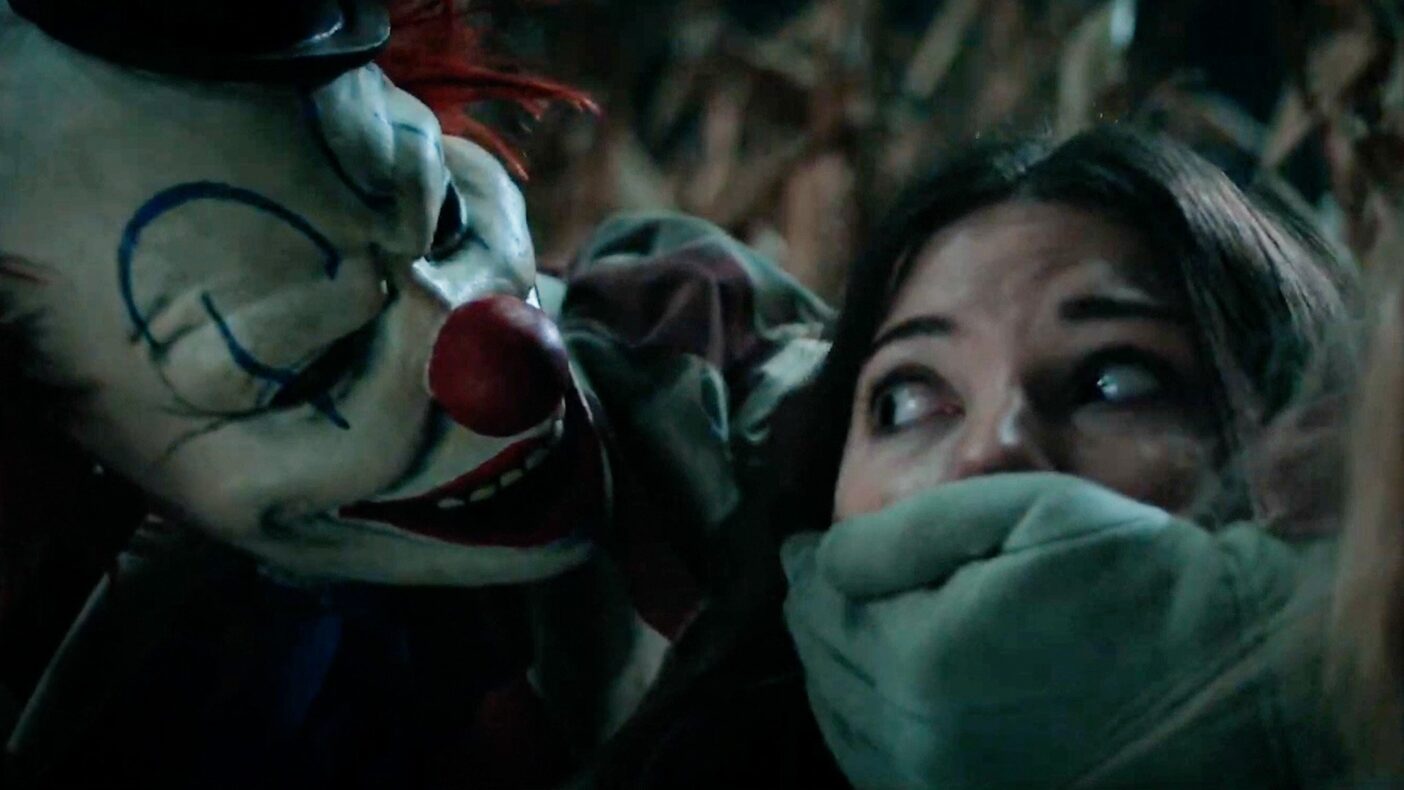
Preachy, obnoxious monologues intended to explain these dynamics and fallouts in the most literal of terms are deployed, a far cry from the scriptwriting genius lurking just beneath Tucker and Dale vs. Evil’s affable nature. There’s simply too much to explore here, and so little time to dig into these nuances and divisions, for the film to fire on any cylinder. Despite this, a longer runtime would be a punishing experience; the action sequences in Clown in a Cornfield’s final half-hour are uninvolving enough as they are without additional setups or payoffs.
Craig still proves that he’s a talented director capable of elevating just about any written material. The film’s camera movements are never showy, but the director does a remarkable job of shifting between static shots and pans to create a sense of momentum. The only true horror scene in this film is also a treat, where Craig doesn’t just deploy effective fake-out jump scares, he lets the follow-up shot (the real jump scare, you imagine) also be a fake-out. There’s just enough unpredictability to offer a spark of creative energy in an often rote way of eliciting fear. It isn’t easy to instil and maintain this cinematic language of terror in just a single scene, with no prior slow-burn sequences to herald its arrival, yet the transition into straightforward horror is seamless.
This is also an extremely well-budgeted film, somehow managing to cram heaps of action, different locations, and a moderately large cast into a budget of just $1M. One can only hope that the movie’s box-office success (out-earning its budget 10x times over) and fortuitous streaming rights on Shudder (where horror-comedy fans will surely flock to it) will give Craig the chance to cut his teeth on projects where he can do so much more with his ambition. As it currently stands, Clown in a Cornfield is an awkward jumble of half-baked ideas, a comedy with very few jokes, and an exploration of a town in crisis without a compelling character in sight.
USA • LUXEMBOURG • UK • CANADA | 2025 | 96 MINUTES | 2.39:1 | COLOUR | ENGLISH

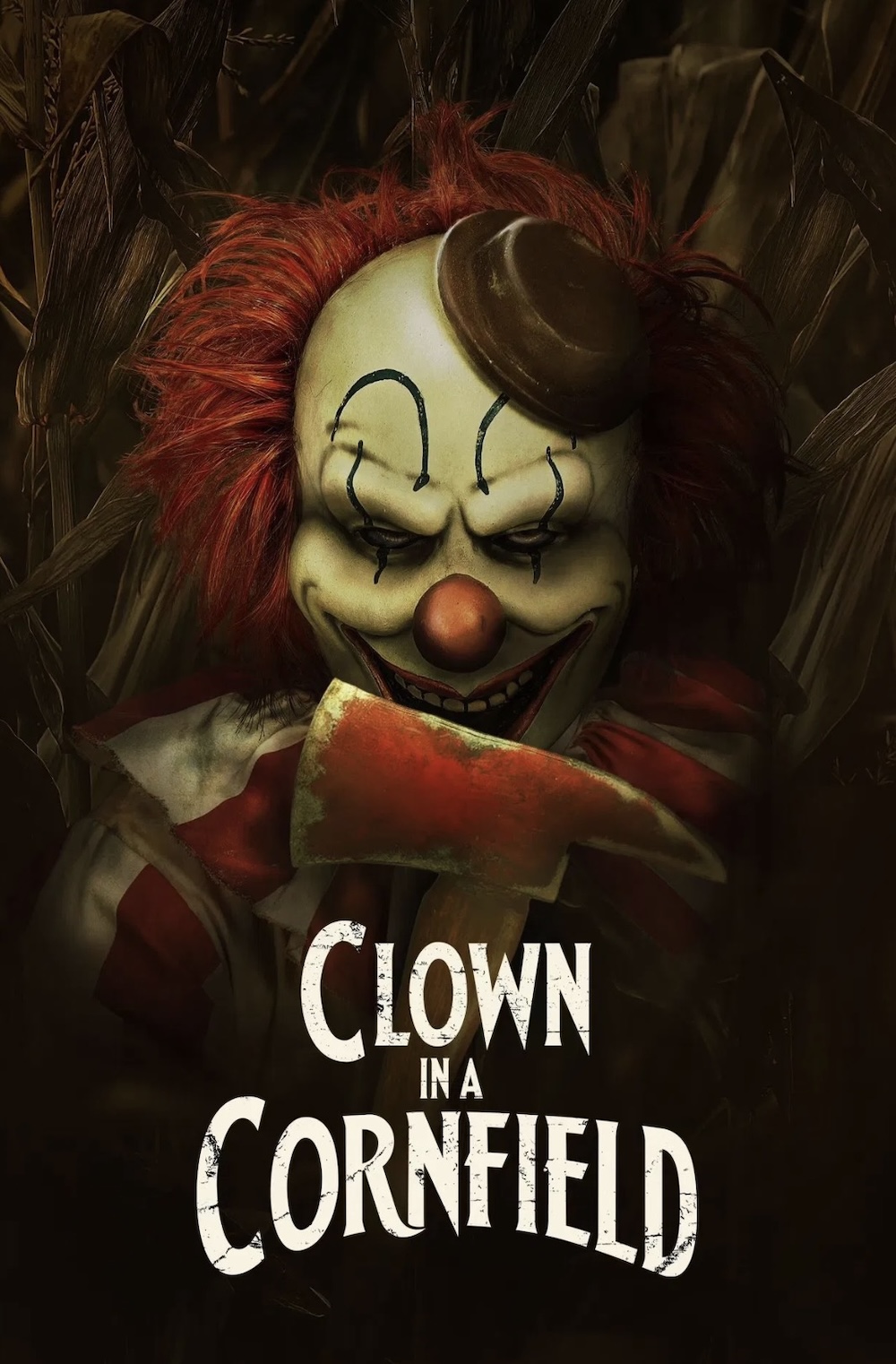
director: Eli Craig.
writers: Carter Blanchard & Eli Craig (based on the novel by Adam Cesare)
starring: Katie Douglas, Aaron Abrams, Carson MacCormac, Vincent Muller, Will Sasso, Kevin Durand, Cassandra Potenza & Verity Marks.
